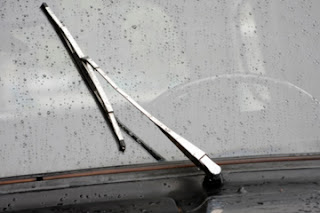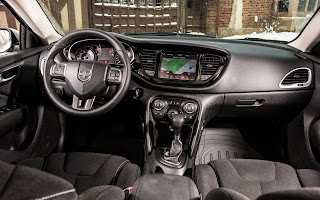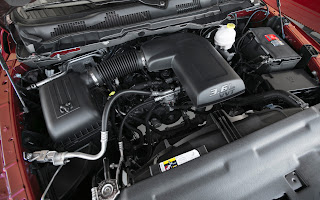Summer fun and sun are just around the
corner, and it’s time for you to get your vehicle ready for those upcoming road
trips. High temperatures, stop-and-go traffic and extended use of the air
conditioner can all be tough on the mechanical components of your vehicle. Your
cooling system will be working harder to keep the engine from overheating and
your tires have to perform better under hotter conditions as well. It is just
as important to get your car ready for summer as it is for winter. To insure
that you cover everything, here are some good examples of what to check:
1. Tires
& Brakes:
The tires on your vehicle can really take a beating during the winter months, especially for us here in New England. After all of the snow and ice has melted and the nice weather has come, check your tires and make sure that they are still in good shape. If you hit a few too many potholes over the winter months, it may be a good idea to have your tires realigned. If the treading is worn out, replace the tire. A simple way to check the proper depth of your tire tread is to insert a quarter down into the tread of the tire. If you can see all of George’s head, it is time for a new tire with deeper tread. Another option is to have a set of winter snow tires for the winter months and a set of summer tires that you can swap out when the weather is nicer.
The tires on your vehicle can really take a beating during the winter months, especially for us here in New England. After all of the snow and ice has melted and the nice weather has come, check your tires and make sure that they are still in good shape. If you hit a few too many potholes over the winter months, it may be a good idea to have your tires realigned. If the treading is worn out, replace the tire. A simple way to check the proper depth of your tire tread is to insert a quarter down into the tread of the tire. If you can see all of George’s head, it is time for a new tire with deeper tread. Another option is to have a set of winter snow tires for the winter months and a set of summer tires that you can swap out when the weather is nicer.
Consult your vehicle manual for recommended tire pressure, and keep all
of your tires at the recommended level. If you can maintain the ideal tire
pressure, you will save money at the pump and prolong the life of your tires.
Poorly inflated tires force the engine to work harder, decreasing fuel
efficiency and taxing the engine as a result.
Corrosives, such as salt and sand, which are used on the roads during the winter months, can cause your brake pads to stick to the disks. A sticking brake caliper is more than just an annoyance. If ignored, it can lead to dangerous driving conditions and cause serious damage to other brake system components, such as excessive premature brake pad and rotor wear.
To maintain your tires, always rotate them, and have them high-speed balanced every 5,000 miles. A tire rotation will allow us to inspect your tires to make sure that they haven’t been improperly aligned in the past. We also recommend a thorough inspection and cleaning of your brakes and calipers, at least once a year, after the snow and ice are gone. This could easily save you between $400 and $500 in brake repairs and replacements.
2. Engine Coolant:
The cooling system of your vehicle is not to be confused with the air conditioning system. The cooling system is what keeps your vehicle’s engine at the correct operating temperature. Be sure to verify that your engine coolant is the right strength and in good condition. You need the proper amount of antifreeze to ensure your coolant doesn’t freeze and cause cracks. At the same time, too much antifreeze can prevent proper circulation and cause heating problems. Your antifreeze (the liquid that goes in your radiator) is an essential part of your car’s winter protection. Your vehicle contains a 50/50 mix of water and antifreeze, which helps protect against corrosion and is best for your engine and its cooling system. Make sure the level is full and that the mixture is close to 50/50.
As time goes on, your car’s radiator builds solid deposits that can clog the cooling system. A quick, inexpensive radiator flush can keep your system in tip-top shape and will not only extend the life of your vehicle; it will also prevent major mechanical failure. It is important to change your antifreeze seasonally. You did remember to have your radiator flushed last spring, didn’t you?
Corrosives, such as salt and sand, which are used on the roads during the winter months, can cause your brake pads to stick to the disks. A sticking brake caliper is more than just an annoyance. If ignored, it can lead to dangerous driving conditions and cause serious damage to other brake system components, such as excessive premature brake pad and rotor wear.
To maintain your tires, always rotate them, and have them high-speed balanced every 5,000 miles. A tire rotation will allow us to inspect your tires to make sure that they haven’t been improperly aligned in the past. We also recommend a thorough inspection and cleaning of your brakes and calipers, at least once a year, after the snow and ice are gone. This could easily save you between $400 and $500 in brake repairs and replacements.
2. Engine Coolant:
The cooling system of your vehicle is not to be confused with the air conditioning system. The cooling system is what keeps your vehicle’s engine at the correct operating temperature. Be sure to verify that your engine coolant is the right strength and in good condition. You need the proper amount of antifreeze to ensure your coolant doesn’t freeze and cause cracks. At the same time, too much antifreeze can prevent proper circulation and cause heating problems. Your antifreeze (the liquid that goes in your radiator) is an essential part of your car’s winter protection. Your vehicle contains a 50/50 mix of water and antifreeze, which helps protect against corrosion and is best for your engine and its cooling system. Make sure the level is full and that the mixture is close to 50/50.
As time goes on, your car’s radiator builds solid deposits that can clog the cooling system. A quick, inexpensive radiator flush can keep your system in tip-top shape and will not only extend the life of your vehicle; it will also prevent major mechanical failure. It is important to change your antifreeze seasonally. You did remember to have your radiator flushed last spring, didn’t you?
3. Windshield
Washer Fluid & Wipers:
Chances are your windshield wipers saw their fair share of snow, ice and rain this winter. Check the rubber on them to make sure that it is not worn out. Windshield wipers should be replaced once a year. Spring typically brings with it a lot of rain, so you will most likely need to use them often in the next few months. It’s an inexpensive maintenance that will drastically improve your driving safety during the rainy months.
You’ll also be using lots of washer fluid as you try to keep your windshield sparkly. A mile stuck behind an 18-wheeler will have your windshield looking a mess if you’re low on washer fluid. There are mainly two types of windshield washer fluid, one for everyday use, and one that works like a de-icer more used during the winter months. Using an everyday use washer fluid works great as long as the temperature is above 40F. Winter formulas are designed to work at temperatures as low as -25F.
4. Motor Oil:
Chances are your windshield wipers saw their fair share of snow, ice and rain this winter. Check the rubber on them to make sure that it is not worn out. Windshield wipers should be replaced once a year. Spring typically brings with it a lot of rain, so you will most likely need to use them often in the next few months. It’s an inexpensive maintenance that will drastically improve your driving safety during the rainy months.
You’ll also be using lots of washer fluid as you try to keep your windshield sparkly. A mile stuck behind an 18-wheeler will have your windshield looking a mess if you’re low on washer fluid. There are mainly two types of windshield washer fluid, one for everyday use, and one that works like a de-icer more used during the winter months. Using an everyday use washer fluid works great as long as the temperature is above 40F. Winter formulas are designed to work at temperatures as low as -25F.
4. Motor Oil:
 For a typical driver, you generally
change the oil every 3 or 4 months, which corresponds perfectly with the change
in seasons. Once spring is here, get an oil change, which includes topping off
all of your fluids. Proper fluid levels are critical for your vehicle’s best
performance.
For a typical driver, you generally
change the oil every 3 or 4 months, which corresponds perfectly with the change
in seasons. Once spring is here, get an oil change, which includes topping off
all of your fluids. Proper fluid levels are critical for your vehicle’s best
performance.
In the past couple of years, most
manufacturers suggest using 5W-20 in their cars. If your car was built in the
USA and is older than two years old most suggest 5W-30. Mobil1 has a website,
which helps you find the manufacturers recommendation for your car if in doubt.
5. Battery:
On average, a battery will last anywhere from two to three years depending on its quality. If your battery is older than that, it’s only a matter of time before it leaves you stranded. Unfortunately, a battery gives little warning before it goes dead and it will likely do so when you least expect it.
It’s important to have a reliable battery during both the cold winter months and the hot summer months. Did you know that hot weather can decrease battery energy and life nearly as much as cold weather? It just happens for different reasons.
During hot weather, the inside of your battery can be damaged by a lack of fluid that often occurs because of the high temperatures causing evaporation. Dirt and grime on the top of the battery can actually conduct energy away from the battery that is needed for the ignition of your vehicle. Oxidization on the battery and its connections can insulate the battery and block the flow of current. Also, have the charge rate of your battery inspected. Many people assume that over-charging a car battery is helpful. However, it can be just as damaging as under-charging your battery.
5. Battery:
On average, a battery will last anywhere from two to three years depending on its quality. If your battery is older than that, it’s only a matter of time before it leaves you stranded. Unfortunately, a battery gives little warning before it goes dead and it will likely do so when you least expect it.
It’s important to have a reliable battery during both the cold winter months and the hot summer months. Did you know that hot weather can decrease battery energy and life nearly as much as cold weather? It just happens for different reasons.
During hot weather, the inside of your battery can be damaged by a lack of fluid that often occurs because of the high temperatures causing evaporation. Dirt and grime on the top of the battery can actually conduct energy away from the battery that is needed for the ignition of your vehicle. Oxidization on the battery and its connections can insulate the battery and block the flow of current. Also, have the charge rate of your battery inspected. Many people assume that over-charging a car battery is helpful. However, it can be just as damaging as under-charging your battery.
6. Air
Conditioning:
If you live in New England, chances are you haven’t used your air conditioning system much since last summer. Over time, your A/C can slowly leak refrigerant, which will cause the compressor to operate for longer periods than usual and put added strain on your engine. We recommend you have your vehicle air conditioning checked at least once each year, preferably before the summer months. Don’t wait until you have hot air blowing on your face when it’s 90 degrees outside to realize it’s time to have your air conditioning inspected.
An air conditioner that doesn’t work properly is not worth using, so if the air from the vent is not cold, it’s time to have some refrigerant added.
If you live in New England, chances are you haven’t used your air conditioning system much since last summer. Over time, your A/C can slowly leak refrigerant, which will cause the compressor to operate for longer periods than usual and put added strain on your engine. We recommend you have your vehicle air conditioning checked at least once each year, preferably before the summer months. Don’t wait until you have hot air blowing on your face when it’s 90 degrees outside to realize it’s time to have your air conditioning inspected.
An air conditioner that doesn’t work properly is not worth using, so if the air from the vent is not cold, it’s time to have some refrigerant added.
Crest Auto World in North Conway, New
Hampshire can help you with all of these services. Just give us a call at
603-356-5401 to make an appointment. We’ll help make sure that you can drive
safe all year long.




























